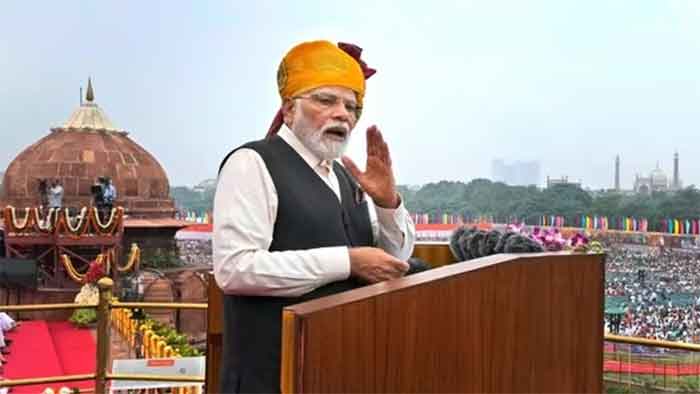
Speaking to farmers on May 14, 2021 Prime Minister Modi called the corona virus, an ‘adrashya dushman”, meaning an invisible enemy. He continued with the war symbolism when he added that preparations are being undertaken on war footing to confront the virus and that the three services — air force, navy and army are fully committed to combating it.
The use of the phrase ‘adrashya dushman’ is not only a new linguistic turn he employed, but also it is reminiscent of the speech he delivered to Combined Commanders Conference on Oct 17, 2014, where he exactly used the same term. To cite him, he then said, ‘The threats may be known, but the enemy may be invisible.’
In 2014, the prime minister was alluding to the threat of terrorism the country was facing. However, some experts then said that the statement was a strategic over-reach. Because, unlike previous prime ministers who had always clearly spelt out broad political objectives, and left the development of an appropriate military strategy to realize those objectives to the armed forces, he was actually predicting the behaviour of military warfare and implicitly commanding them to counter it. (He had said, “Full scale wars may become rare, but force will remain an instrument of deterrence and influencing behaviour, and the duration of conflicts will be shorter.”)
So, when he said ‘adrashya dushman’ what was he trying to communicate?
To be sure, the prime minister has hardly ever described the virus in the manner he did on May 14. When he announced the national lockdown on television on March 24, 2020, he used terms such as ‘dangerous’ and ‘disaster’, to refer to the pandemic but not to the virus. The same goes for his national address a few months later on Oct 20 when he greeted the nation on the occasion of Navratri, Dussehra, Eid, Deepawali, Chhath Puja and Gurunanak Jayanti.
This is indeed remarkable because other world leaders were describing the coronavirus in various ways. The then US president Trump called it a ‘foreign virus’, a ‘horrible infection’, and vowed to ‘defeat’ it. The Chinese president Xi Jinping referred to it rather mildly as ‘new coronavirus pneumonia’. Surprisingly, the then prime minister of Japan Abe on April 7, 2020 used the expression ‘invisible enemy’ to describe the virus when he declared a state of Emergency in the country.
One can think of at least three reasons why he chose to call it an invisible enemy. The first of course is the context. The Prime Minister was talking to a predominantly rural-agrarian audience that has experienced the disease and its devastation but cannot fathom what has brought it about. In simple terms, he was attempting to frame the disease in a manner that would make his explanation easily accessible or comprehensible to common rural folks. Maybe, therefore, he also called the virus ‘behrupiya’ (mimicker) — an expression that any urban and rural Hindi-speaking person can easily follow and intuitively understand.
The second reason for calling the virus an invisible enemy and a behrupiya was to proclaim that the government’s intention and actions were adequate and above board. However, the virus trumped all its bold and valiant efforts. The government was entitled to claim that the virus was conquered. Even some of its celebration for the past 4-5 months was in order. The slippery virus in the form of second wave, however, shattered its effort. Something or someone had to be held accountable. An enemy had to be invented. The virus thus became the invisible enemy and the behrupiya. The unstated message was ‘blame the virus, not us’.
The third reason is to shroud the cunningness of the virus with assurances of all-out war effort. This is not evident in the Prime Minister’s speech on May 14. If anything, the speech is a boastful narration of all the efforts the government is making to combat the virus. It, however, is intriguing that the prime minister devotes more than 40 percent of the speech on fighting the virus when the occasion is ostensibly organized to mark the release of the eighth instalment of financial benefit under PM-Kisan yojana.
One of the hallmarks of this government is that the harder it tries to get over a difficult situation, the louder its voices grow, more emphatic its assertions are, and more self-congratulatory its speeches become.
Pradeep Krishnatray is former director, Johns Hopkins Center for Communication Programs, New Delhi
GET COUNTERCURRENTS DAILY NEWSLETTER STRAIGHT TO YOUR INBOX
















































